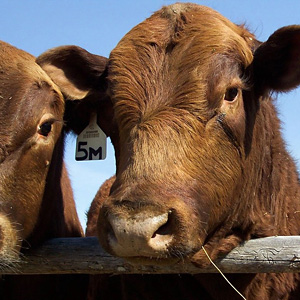Breeding the Angus Cattle: Some Do’s and Don’ts to Keep in Mind
Blog | October 27th, 2016
Breeding Angus cattle entails a wide range of variables that includes producing offspring that are largely used for marketing beef. The underlying principle is about being successful in breeding cows to sell as beef or replacements.
The process of breeding Angus cattle may sound simple, but there is a lot involved and a few do’s and don’ts to keep in mind. Initially you begin by starting a beef cow-calf operation. That requires a ranch or farm where you have bulls and cows that breed to produce calves.
As a rule, most rookies begin as commercial cattlemen to attain the experience in selecting cows and bulls, calving, weaning, culling, marketing and replacing heifers. After a rookie gains experience then he or she goes into raising purebreds or doing seedstock.
Selecting Your Herd
Buy high quality cattle that meet or exceed your standards for good breeding. Select you own bull so that you can improve your herd. Remember, the bulls genetics will pass onto at least half of you calf crop. In addition, know the meaning of conformation so that you are able to determine how good of a bull you will need.
Select a Breeding Program
There are basically two types of breeding programs. A well, parts of both programs can be combined to fit your needs.
Small Herd – If you have to small of a herd to have a bull then artificial insemination (AI) is likely your best option for breeding your herd.
Large Herd – If you have 10 or more cattle and AI is not something you want to do, then it is best to get a herd bull. Generally, you will need 1 bull per 25 cows. However, high fertility bulls with a big libido are able to service 50 cows with no lowering of conception rates. Typically, bulls reach peak fertility when they are 20 months of age. After that, a bull’s fertility can drop due to injury or injury. However, with a healthy diet, a bull’s fertility will not decline until the ag of 6 or 7.
Breeding Your Cattle
It is imperative that you know when your cows go into estrus, which is a cyclical period of sexual receptivity and fertility. Once you know when your cows are ready to breed then you can administer your breeding program.
However, if you have a herd bull then you do not need to know when your cows go into heat. But you do need to know when they breed so you have accurate records.
If you are artificially inseminating your cows and heifers, make sure you how to do it and when to AI your bovine females. You can also hire a professional if you are not comfortable doing AI.
Monitoring
It is important to monitor your cows and bulls during the breeding season. If you have numerous bulls then you may have some trouble with them fighting over females. A few rules of thumb:
You can run bulls under age 4 with older bulls to prevent the cattle from being serviced by the bull with the highest fertility. Otherwise, you may have a bull that gets injured, has a broken penis or does not get the job completed.
If you notice crooked tails or you see tails sticking out when the cattle walk, then the most likely have been bred within the last 24 to 48 hours of noticing.
Remove the bulls after 64 to 85 days from the time they were put in. but if you choose to have year round breeding and calving, pull the bulls out after 2-3 months. This gives all the cattle 3 to 4 opportunities of being covered.
Optimized by NetwizardSEO.com.au
